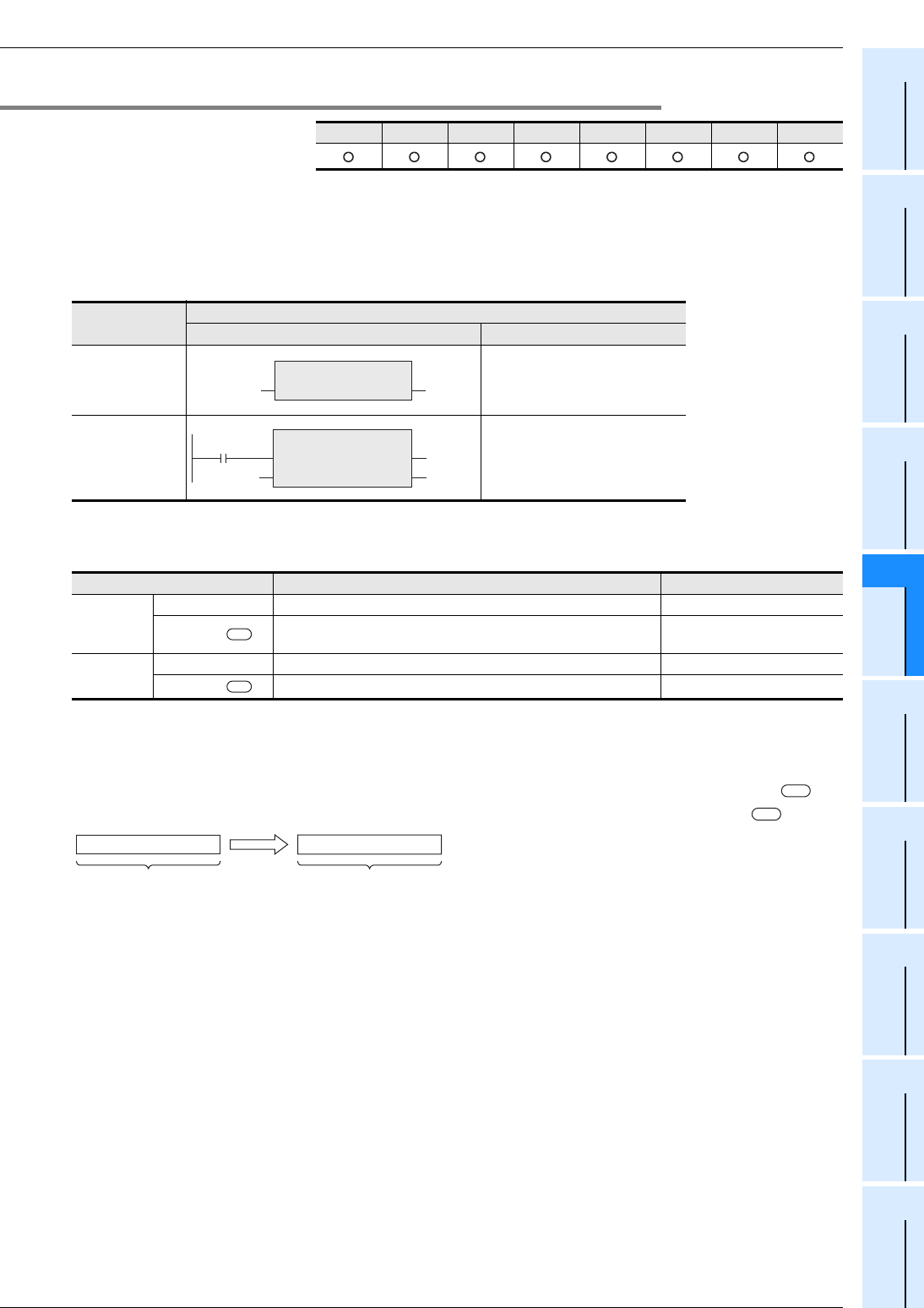
5 Applied Functions
5.1 Type Conversion Functions
97
FXCPU Structured Programming Manual
(Application Functions)
1
Outline
2
Function List
3
Function
Construction
4
How to Read
Explanation of
Functions
5
Applied
Functions
6
Standard
Function Blocks
A
Correspondence
between Devices
and Addresses
5.1.31 DWORD_TO_DINT(_E)
Outline
This function converts double word [unsigned]/bit string [32-bit] data into double word [signed] data, and
outputs the data obtained by conversion.
1. Format
*1. Output variable
2. Set data
In explanation of functions, I/O variables inside ( ) are described.
Explanation of function and operation
This function converts double word [unsigned]/bit string [32-bit] data stored in a device specified in into
double word [signed] data, and outputs the data obtained by conversion to a device specified in .
Cautions
1) Use the function having "_E" in its name to connect a bus.
2) When handling 32-bit data in structured programs, you cannot specify 16-bit devices directly, different
from simple projects. Use labels when handling 32-bit data.
You can specify 32-bit counters directly, however, because they are 32-bit devices.
Use global labels when specifying labels.
FX3U(C) FX3G FX2N(C) FX1N(C) FX1S
FX
U
/FX
2C
FX0N FX0(S)
Function name
Expression in each language
Structured ladder ST
DWORD_TO_DIN
T
DWORD_TO_DINT(_DWORD);
Example:
Label 2:=
DWORD_TO_DINT(Label 1);
DWORD_TO_DIN
T_E
DWORD_TO_DINT_E(EN,
_DWORD, Output label);
Example:
DWORD_TO_DINT_E(X000,
Label 1, Label 2);
Variable Description Data type
Input
variable
EN Execution condition Bit
_DWORD ( )
Conversion source double word [unsigned]/bit string [32-bit] data
Double Word [unsigned]/
Bit string [32-bit]
Output
variable
ENO Execution status Bit
*1 ( )
Double word [signed] data after conversion Double Word [signed]
DWORD_TO_DINT
_DWORD *1
Label 1 Label 2
DWORD_TO_DINT_E
EN ENO
*1
Label 2
X000
Label 1
_DWORD
s
d
s
d
BC614EH 12345678
Double word [unsigned]/
bit string [32-bit] data
Double word [signed] data


















